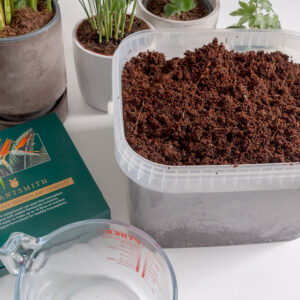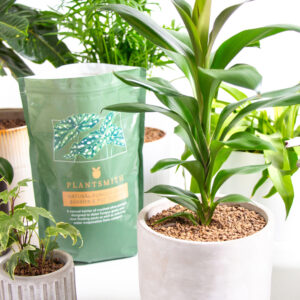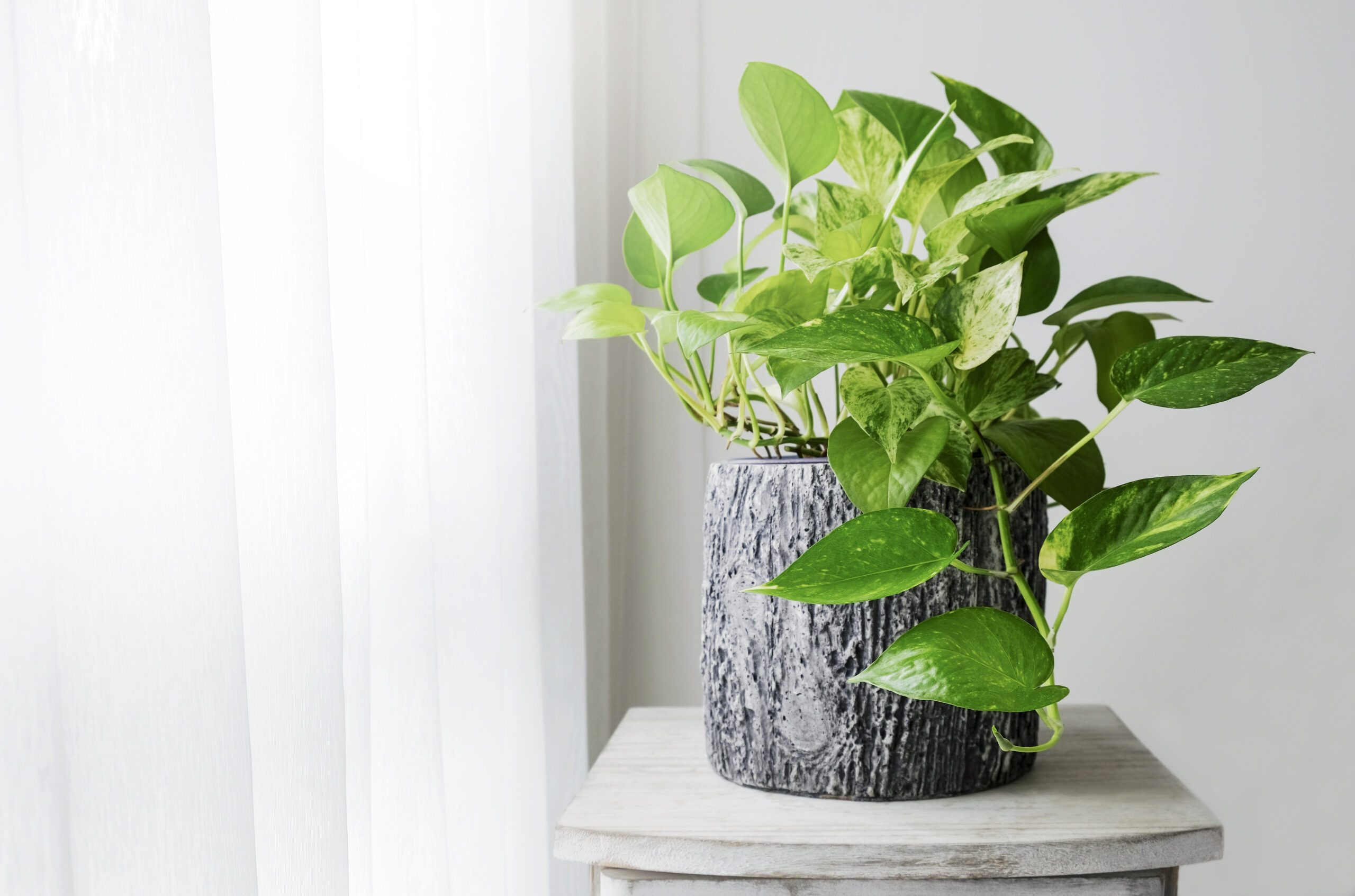Devil’s Ivy or Golden Pothos?
If ever a plant was going to have an identity crisis, it would be devil’s ivy. Apart from the common name I’ve just mentioned, it goes by the nicknames of golden pothos, Ceylon creeper and money plant. Its current botanical name is Epripremnum aureum but to older gardeners it was Scindapsus aureus or even Raphidophora aurea.
Forget the names for one minute. This is any easy-going houseplant with glossy, heart-shaped leaves that are attractively splashed with yellow. It is most commonly grown as a climber as its long stems form aerial roots that enable it to grip to surfaces. However, it can also be grown as a trailer from a hanging container.
A little bit of background
This lovely plant is native to the wonderfully named Mo’orea, one of Windward Islands in the Pacific Ocean. Despite coming from an isolated location, this plant has been introduced by seafarers to many other parts of the world and has naturalised in places like Australia, South Asia and the West Indies.
It was first named by botanists in 1880 and its most recent scientific name of epipremnum derives from two Greek words – ‘epi’ means upon and ‘premnon’ for trunk. This is due to its habit of climbing up trees in the wild – plants are capable of scaling up to 20m (66ft), although they seldom get above 1.8m (6ft) indoors.
Training plants upwards
Devil’s ivy is perfect trained up a support, such as a moss stick. Although the plant is self-clinging, due to the aerial roots that develop along the back of stems, it sometimes needs a helping hand. One way of securing stems to supports is to ‘pin’ them in place using pieces of garden wire bent into U-shapes. A typical moss pole is 1.2m (4ft) in length, so consider adding an extension to extend its height when growth dictates.
Where to place
Devil’s ivy will grow rapidly when placed in a well-lit spot, out of direct sunlight. It is sometimes described as being easy going about the amount of light it receives but it’s best to avoid a dimly lit spot as growth will slow and the golden variegation will start to fade. Make sure it’s not in a draughty position.
Looking after Devil’s Ivy
To keep the plant at its best, clean the leaves to remove any dust and mist occasionally with a hand held spray to raise humidity. If the stems become too long, pinch them back to keep within bounds and to encourage bushiness. Water plants whenever the compost dries out during the growing season, but reduce the amount you give over winter.








